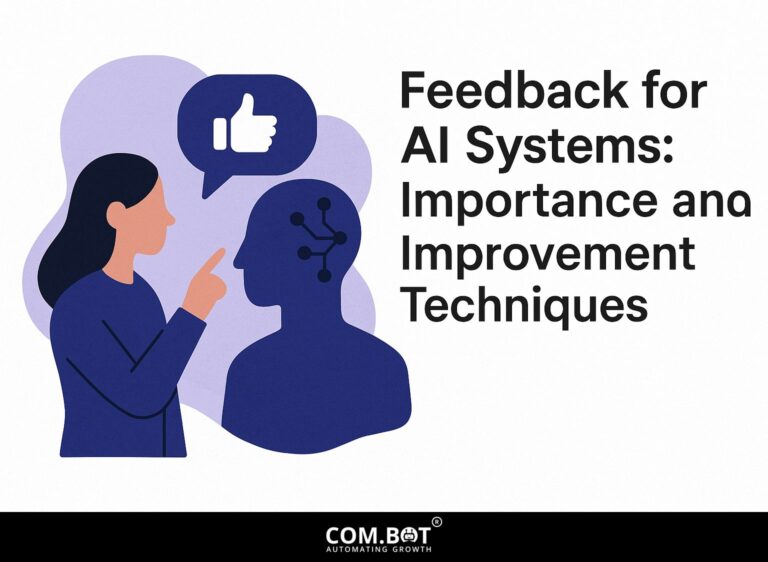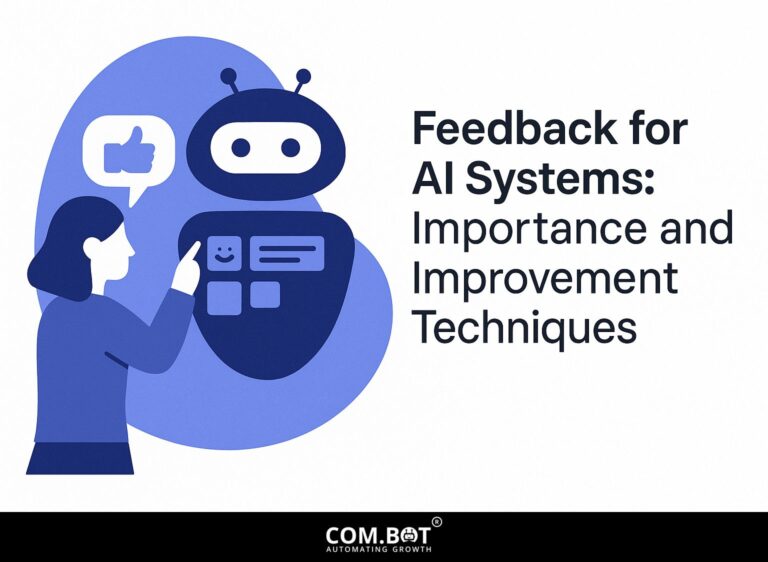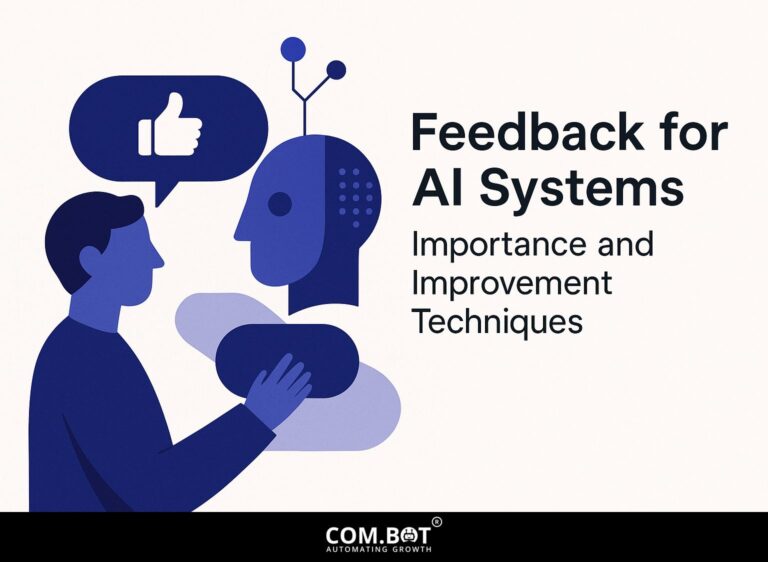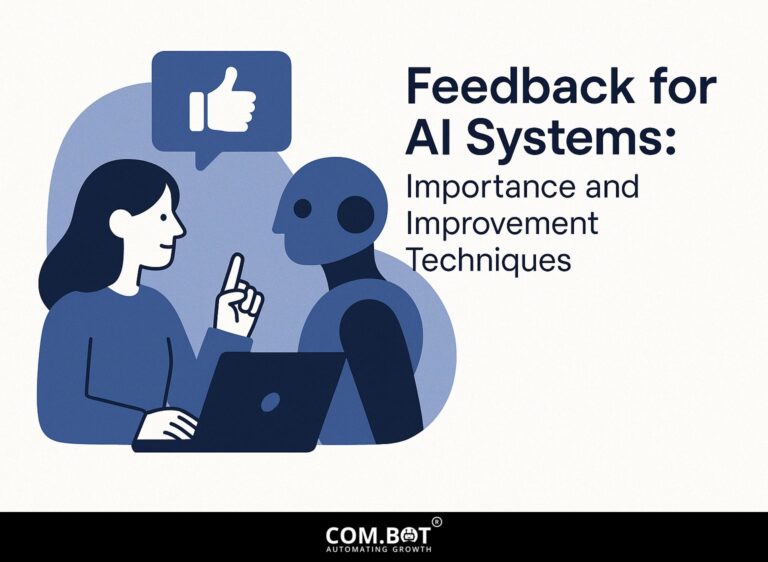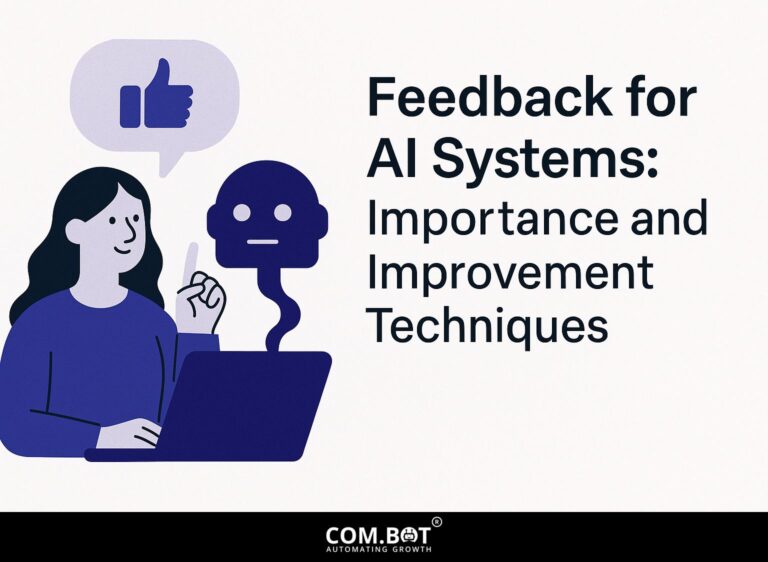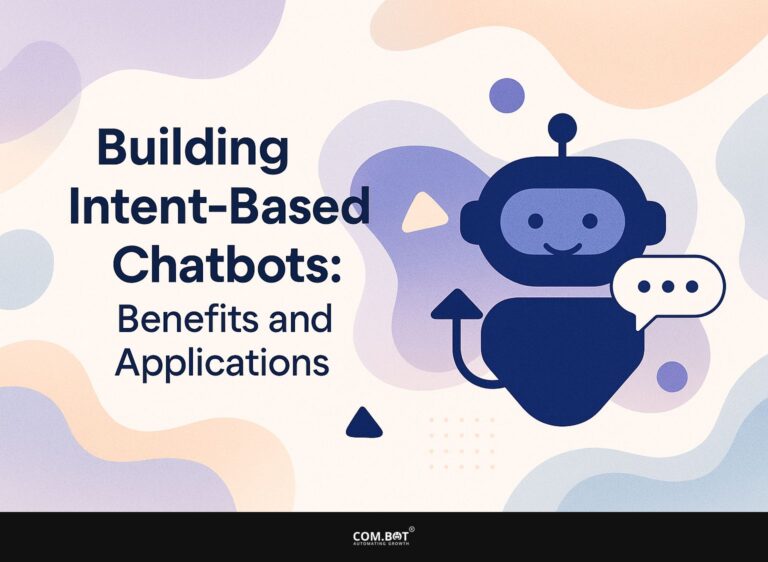Feedback for AI Systems: Importance and Improvement Techniques
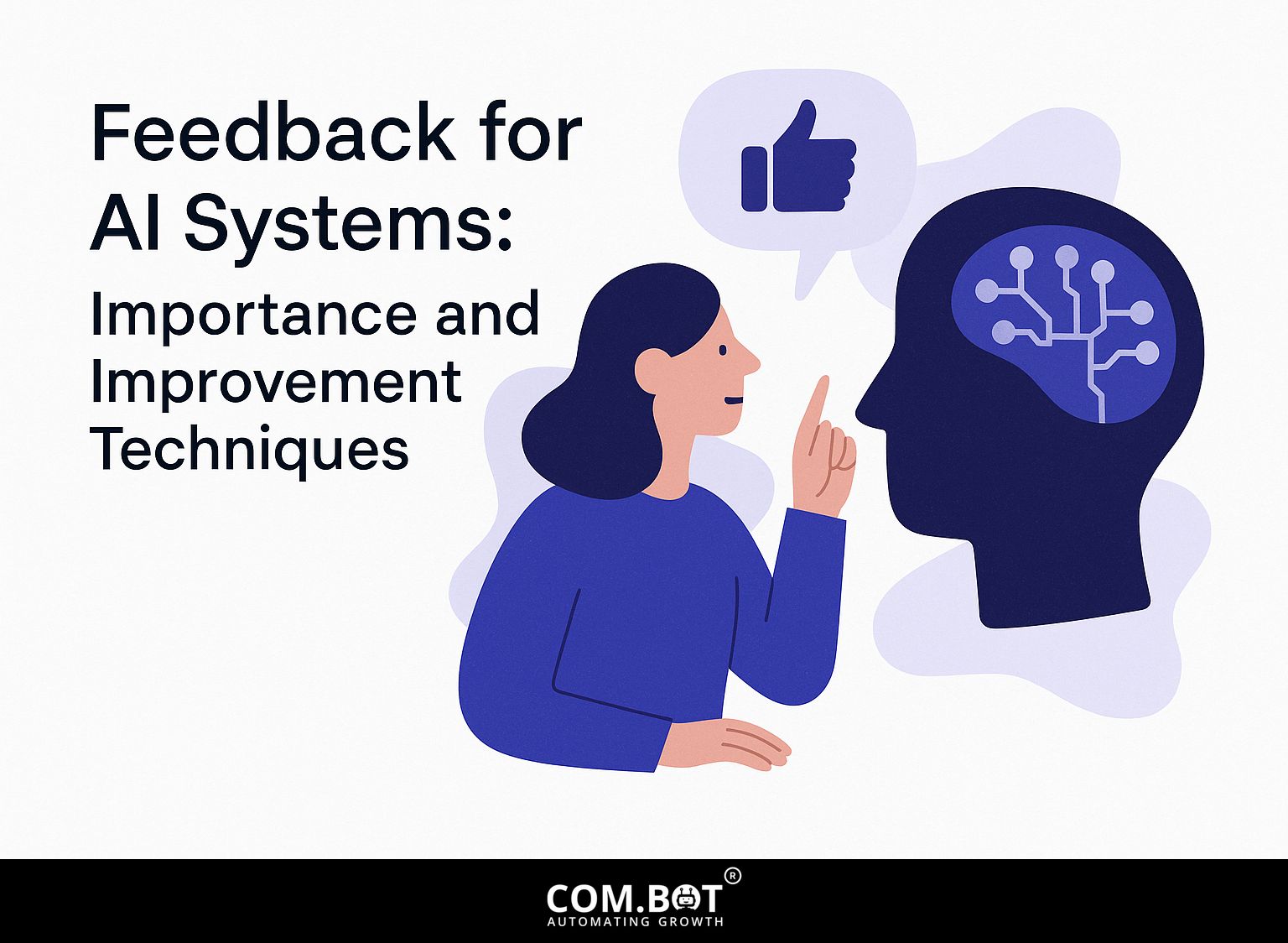
In the fast-changing field of artificial intelligence, human feedback is important for improving systems like large language models and making them work better. As machine learning and reinforcement learning progress, it’s important to learn how to collect and make use of user feedback. This article looks at why feedback is important in AI systems. It provides methods to improve accuracy, build user trust, and encourage new developments.
Key Takeaways:
- 1 Importance of Feedback in AI Systems
- 2 AI Feedback Improvement Data 2025
- 3 Types of Feedback Mechanisms
- 4 Techniques for Gathering Feedback
- 5 Analyzing Feedback for Improvement
- 6 Using Feedback to Improve the System
- 7 Challenges in Feedback Implementation
- 8 Upcoming Developments in AI Feedback Systems
- 9 Frequently Asked Questions
- 9.1 What is the importance of feedback for AI systems?
- 9.2 How does feedback improve AI systems?
- 9.3 What are some techniques for collecting feedback for AI systems?
- 9.4 How can feedback be used to address biases in AI systems?
- 9.5 Is human feedback necessary for improving AI systems?
- 9.6 What are some potential drawbacks of not incorporating feedback in AI systems?
Definition and Purpose
An AI feedback system collects and reviews user interactions to improve choices and system performance.
Amazon uses AI to improve how it suggests products to customers based on feedback. By looking at previous purchases and user ratings, it customizes recommendations, improving customer happiness.
OpenAI implements similar feedback mechanisms, encouraging users to rate outputs from its models. This input helps improve response accuracy and relevance over time.
Both platforms demonstrate how structured feedback systems can make user experiences better by turning basic data into helpful details that steer continuous development.
Historical Context
The evolution of AI feedback systems has progressed from simple rule-based mechanisms to complex reinforcement learning models that learn from user interactions.
In the 2000s, the arrival of reinforcement learning was a major change, enabling systems to use trial-and-error feedback to improve how they work. This method allowed AI to change quickly, resulting in progress in areas such as gaming and robotics.
Today, large language models like GPT-3 use huge datasets and user interactions to create highly detailed responses. These improvements make it easier for users to interact with AI, allowing for more natural and customized experiences. This is evident in customer service chatbots that learn well from previous chats.
Importance of Feedback in AI Systems
Feedback improves AI systems by making them more accurate and helpful. It also directs their development to meet users’ needs. For those interested in how feedback mechanisms work, our article on Feedback for AI Systems: Importance and Improvement Techniques provides deeper insights.
Enhancing Accuracy and Performance
Incorporating user feedback can reduce errors by up to 40% in AI systems, directly impacting overall accuracy and operational efficiency.
A clear case is in healthcare AI, where user feedback on diagnostic tools has resulted in improved algorithms.
For instance, IBM’s Watson Health employs feedback from radiologists, allowing it to better recognize anomalies in imaging data.
Similarly, Google’s DeepMind collaborates with healthcare professionals to fine-tune its AI models based on real-world use, enhancing the accuracy of early disease detection.
Creating a continuous feedback system, where users can report problems or errors, is important for developing reliable AI solutions.
AI Feedback Improvement Data 2025
AI Feedback Improvement Data 2025
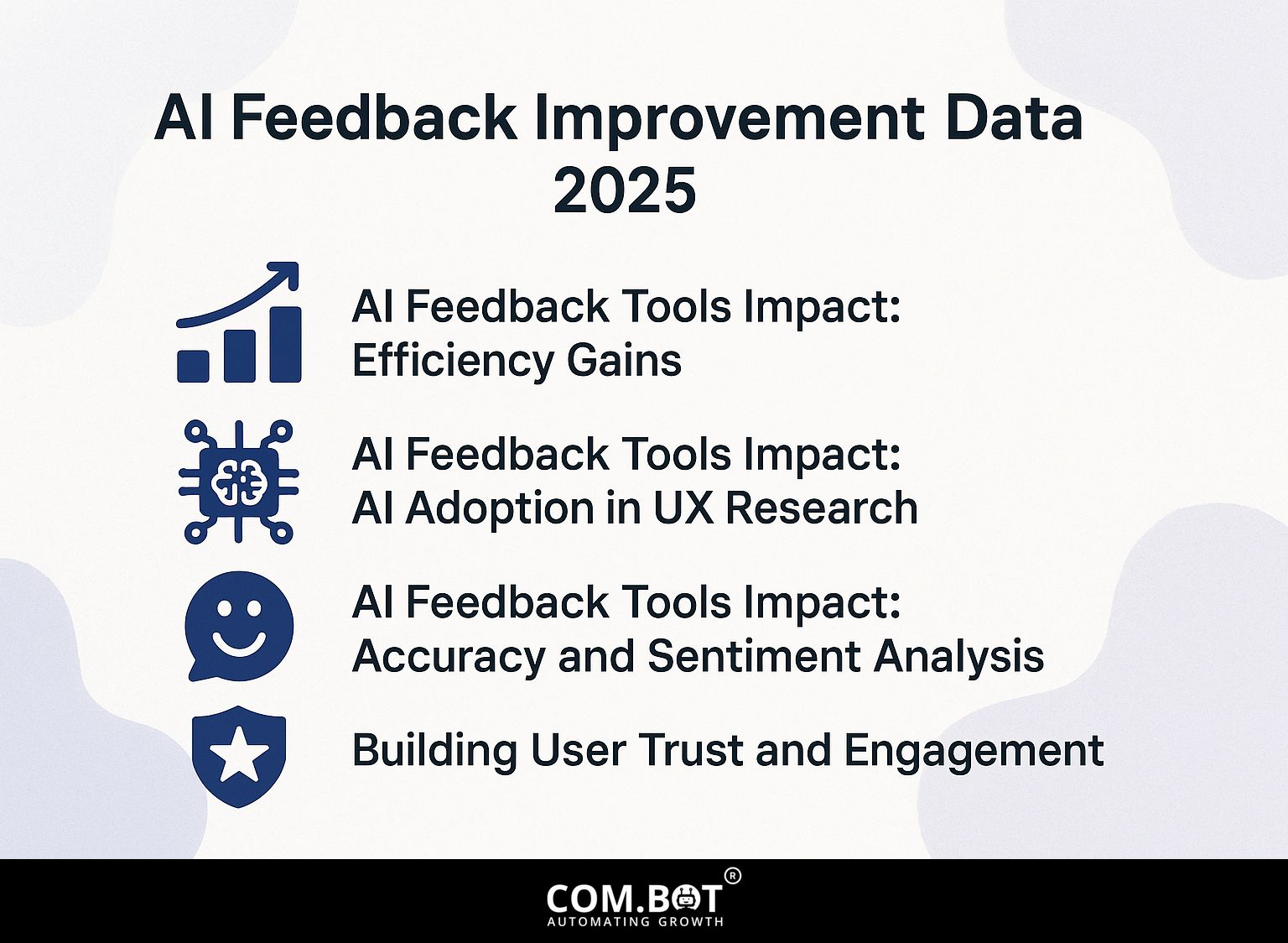
AI Feedback Tools Impact: Efficiency Gains
AI Feedback Tools Impact: AI Adoption in UX Research
AI Feedback Tools Impact: Accuracy and Sentiment Analysis
The AI Feedback Improvement Data 2025 offers information on how AI feedback tools affect and improve performance, especially in UX research and daily work. This data highlights the quantifiable benefits of AI adoption and the growing interest in expanding its use within organizations.
AI Feedback Tools Impact outlines significant efficiency gains brought about by AI implementation. Notably, there is a 10% improvement in AI analysis speed making the process easier and quicker to understand information from big data sets. AI tools have also led to a large 40% reduction in operational tasks, automating repetitive activities and allowing human resources to focus on higher-value tasks. Additionally, there’s a 30% increase in decision-making speed AI’s quick computing enables quicker and more accurate choices.
In terms of AI Adoption in UX Research, the data reveals that 51% of current UX researchers use AI tools regularly. This indicates a solid base of early adopters who recognize the value AI brings to user experience studies. More importantly, a significant 91% of researchers are open to expanding their use of AI, reflecting a strong willingness to integrate more AI-driven methodologies into their work. This openness shows that AI can be widely used and bring new ideas in UX research.
Regarding Accuracy and Sentiment Analysis, the data shows impressive performance metrics. AI tools demonstrate a 90% accuracy in multi-language processing, highlighting their capability to handle diverse linguistic inputs effectively. This is especially useful in international markets that need different languages. Additionally, AI tools have saved 80% of the time on theme detection, significantly speeding up the process of identifying and categorizing feedback themes, which traditionally would be time-consuming and labor-intensive.
In summary, the AI Feedback Improvement Data 2025 explains how AI can significantly improve work processes, increase accuracy, and support better decision-making in businesses. The significant improvements in how we work and the strong interest in expanding AI use suggest that AI tools will become essential for analyzing feedback and conducting UX research.
Building User Trust and Engagement
Gathering and using feedback helps build user trust and involvement, resulting in more users staying and improved user experiences.
To build trust through transparency in feedback loops, consider implementing regular surveys and feedback forms. Tools like Google Forms or SurveyMonkey are perfect for gathering feedback from users easily.
Showing real user feedback on your platform makes it more genuine. Metrics show that companies measuring user satisfaction saw a 20-30% increase in retention after adopting continuous feedback systems.
Show that you are open by explaining how you use user feedback to shape your product or service, highlighting that their views play a key role in your decisions.
Types of Feedback Mechanisms
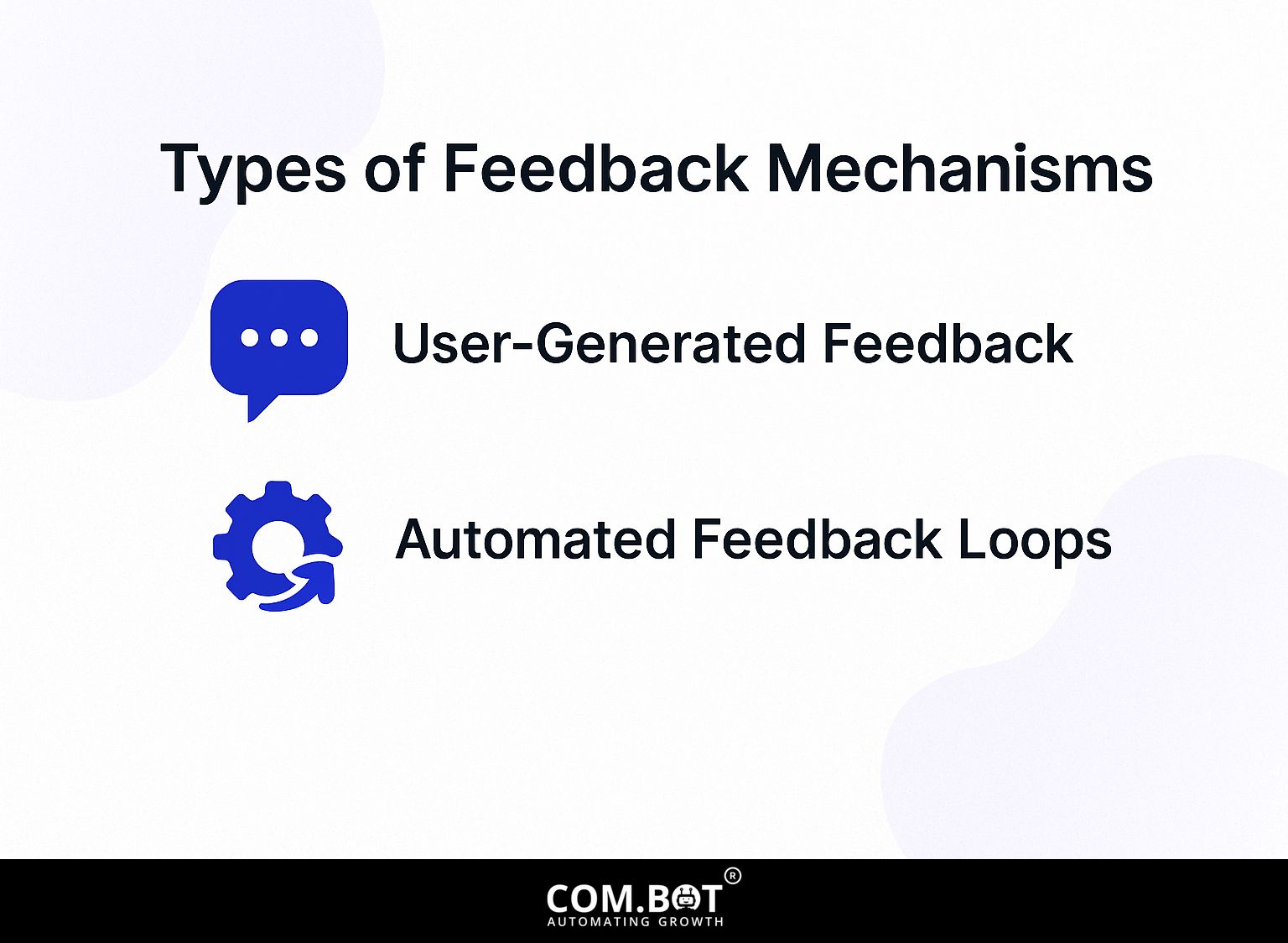
AI systems use different feedback methods to improve how they work and how users interact with them. To explore these mechanisms further, our hidden gem on the importance and improvement techniques of feedback for AI systems offers valuable insights.
User-Generated Feedback
Feedback from users, like ratings and comments, is important for knowing how happy users are and making AI results better.
To effectively collect user feedback, consider using tools like SurveyMonkey for detailed surveys, which starts at $25/month, or Google Forms for a free and intuitive option.
Encourage qualitative data by integrating open-ended questions that allow users to elaborate on their experiences. For example, asking users which features they find most useful can provide important information.
Regularly analyze this feedback to identify trends and areas for improvement, ensuring your AI evolves in line with user needs.
Automated Feedback Loops
Automated systems monitor AI performance and update the algorithms right away based on fresh data and user interactions.
Tools like Datadog and AWS CloudWatch are instrumental in this process.
Datadog, beginning at $15/month, provides thorough monitoring with flexible dashboards, allowing teams to see performance data right away.
Simultaneously, AWS CloudWatch uses a pay-as-you-go pricing system, allowing it to grow with different requirements.
Both platforms allow for quick changes-if Datadog notices a decrease in user activity, it sends alerts to developers for quick action.
Using these tools can greatly improve how quickly systems respond, which makes user experiences better and systems work more smoothly.
Techniques for Gathering Feedback
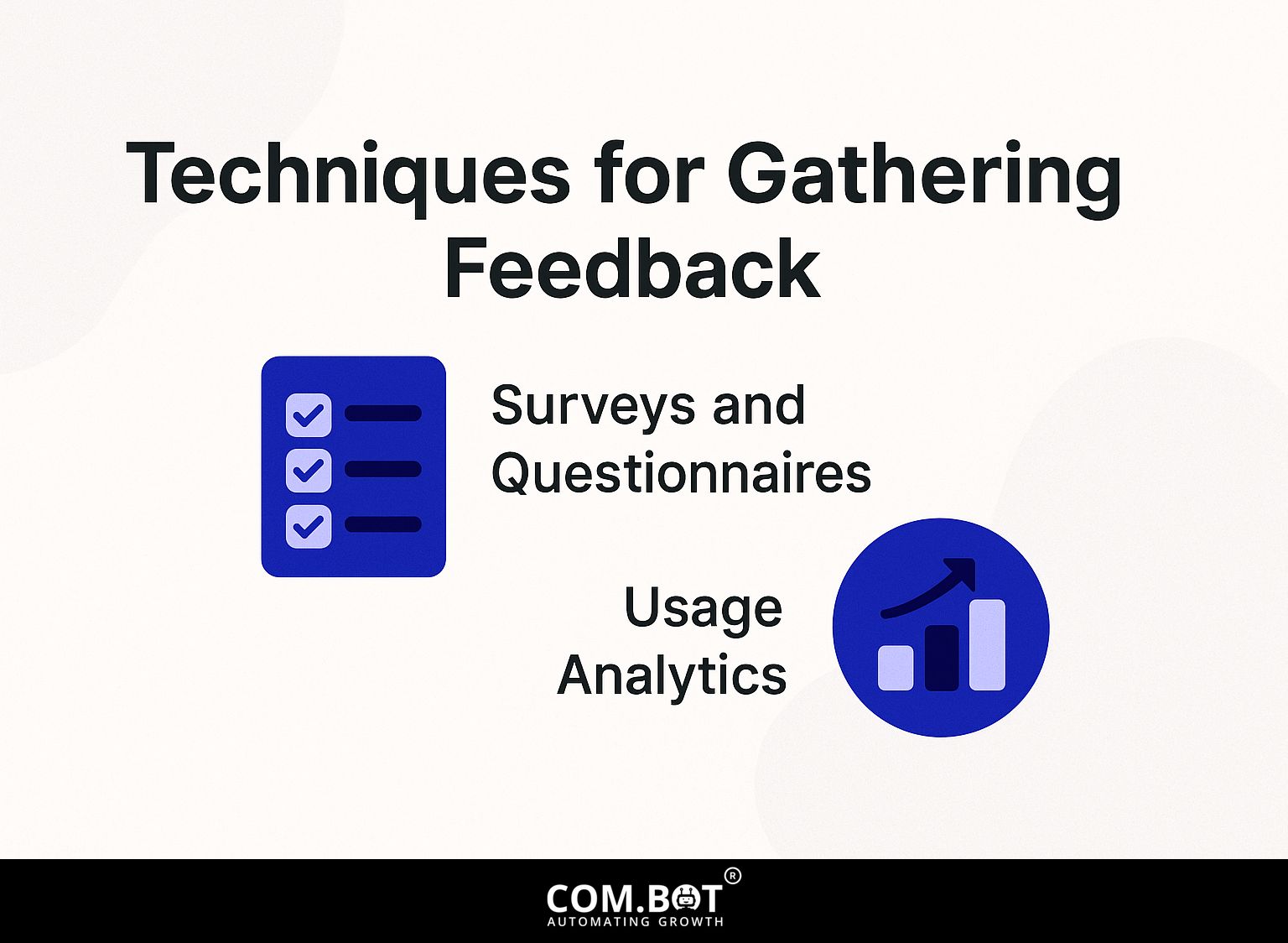
Collecting useful feedback involves using different methods to understand what users think and how they use the product.
Surveys and Questionnaires
Surveys and questionnaires are powerful tools for collecting structured feedback from users, often increasing response rates through incentives.
To design effective surveys, start with clear objectives.
Use tools like Typeform for user-friendly interfaces, allowing customization to fit your branding.
- Give discounts or enter participants into a contest to get them more interested; research shows this can raise response rates by 30%.
After collecting data, use analytics tools like Google Sheets or Excel to find patterns and information. Dividing your feedback into categories can help pinpoint specific areas for improvement, ensuring your survey efforts lead to actionable outcomes.
Usage Analytics
Usage analytics show how users interact with the system and their behavior, helping to improve the system and identify areas that need improvement.
Using tools like Google Analytics and Mixpanel can greatly increase your knowledge of how users interact with your site.
Google Analytics, which is free, allows you to track real-time user activity, identify popular content, and understand traffic sources.
Mixpanel (starting at $89/month) includes tools such as funnel analysis and user cohort tracking. These features let you track user paths and make workflows better.
Regularly reviewing these analytics helps identify trends, revealing opportunities for targeted improvements and ensuring your content meets user needs effectively.
Analyzing Feedback for Improvement
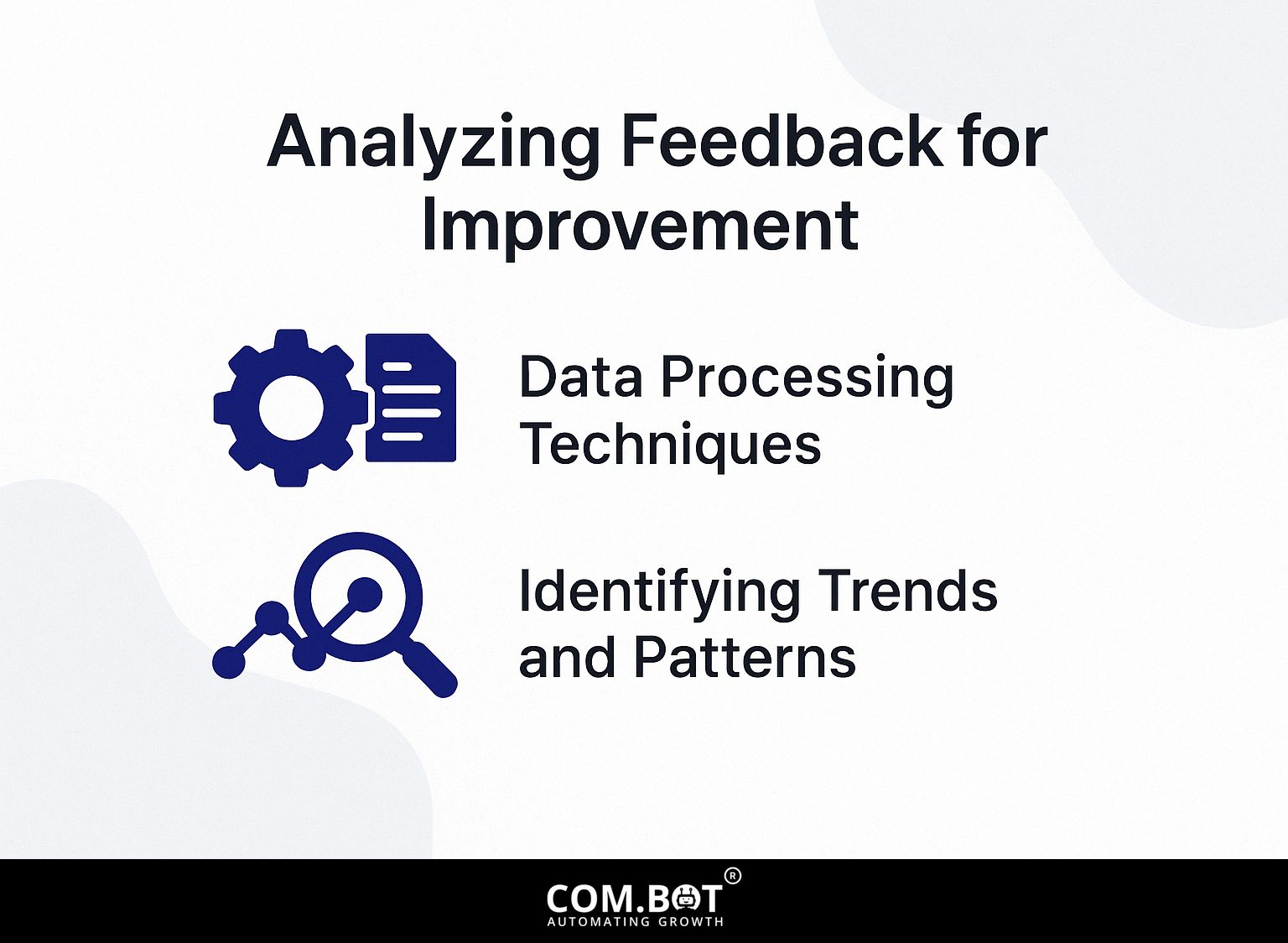
Looking at feedback is important for finding useful information that helps make AI systems better. Related insight: Feedback for AI Systems: Importance and Improvement Techniques delves into effective methods to integrate feedback for system advancements.
Data Processing Techniques
Using advanced methods like natural language processing and sentiment analysis can improve how we understand user feedback.
For instance, Python’s NLTK library allows you to preprocess feedback data, enabling tasks like tokenization and stop-word removal, all for free. This is especially helpful for removing irrelevant information before doing sentiment analysis.
In contrast, RapidMiner offers a more user-friendly interface, helping users develop sentiment models quickly, but comes with a subscription starting at $250 per month.
Companies using these tools can study customer opinions well, converting descriptive data into practical information to make products and services better.
Identifying Trends and Patterns
Finding trends and patterns in feedback data is important for improving AI systems and user interactions.
To study feedback well, use tools like Tableau and Microsoft Power BI. For example, Tableau’s time-series analysis can help visualize trends over time by creating interactive dashboards.
Meanwhile, Power BI’s clustering algorithms can segment user feedback into distinct categories, shedding light on common issues.
Start by importing your feedback data, followed by examining it for recurring themes. This process can show changes in user opinions, allowing specific adjustments to your AI systems and improving the overall user experience.
Using Feedback to Improve the System
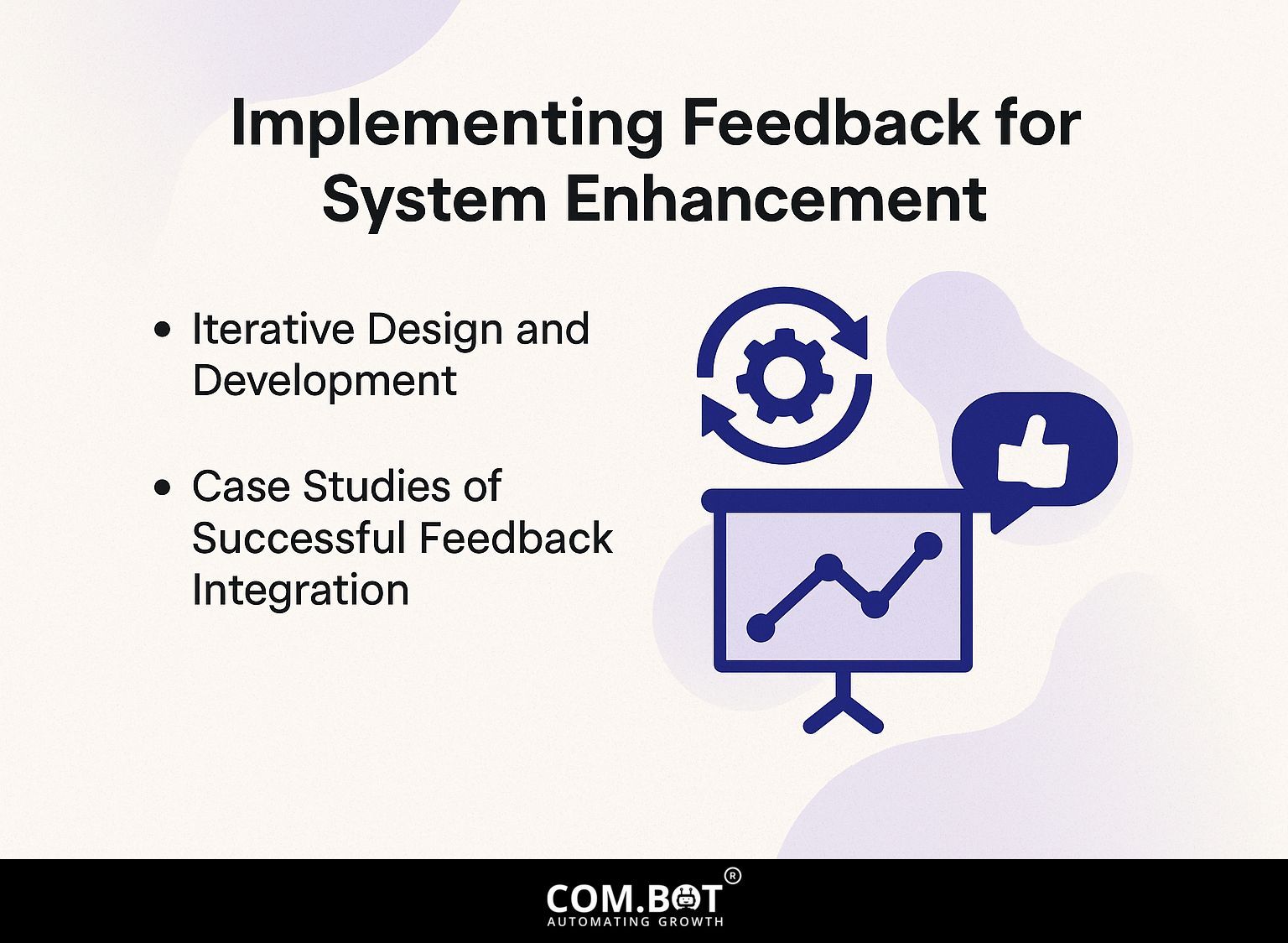
To successfully use feedback, AI systems need to be updated regularly based on what users say.
Iterative Design and Development
A design approach that repeats steps and uses feedback from users can greatly improve how AI systems work and make users happier over time.
To implement this effectively, consider utilizing Agile methodologies, which consist of short development cycles called sprints.
During each sprint, gather user feedback through surveys or user testing sessions to identify pain points. Tools like Trello or Jira can help you manage tasks and track feedback.
For example, a team might build a prototype, test it with users, make changes based on their feedback, and repeat this process to create a better product.
This approach maximizes user involvement, ensuring the final system truly meets their needs.
Case Studies of Successful Feedback Integration
Case studies demonstrate how effective feedback integration has led to substantial improvements in AI systems and user experiences.
For instance, a healthcare AI tool integrated user feedback, enhancing its diagnostic accuracy by 30%. Similarly, an e-commerce platform revamped its recommendation engine based on customer reviews, resulting in a 25% increase in conversions.
The examples show the need for regular feedback collection. Using tools like SurveyMonkey for user surveys and Google Analytics to understand behavior can help improve continuously.
Involving users leads to higher satisfaction and better business results.
Challenges in Feedback Implementation
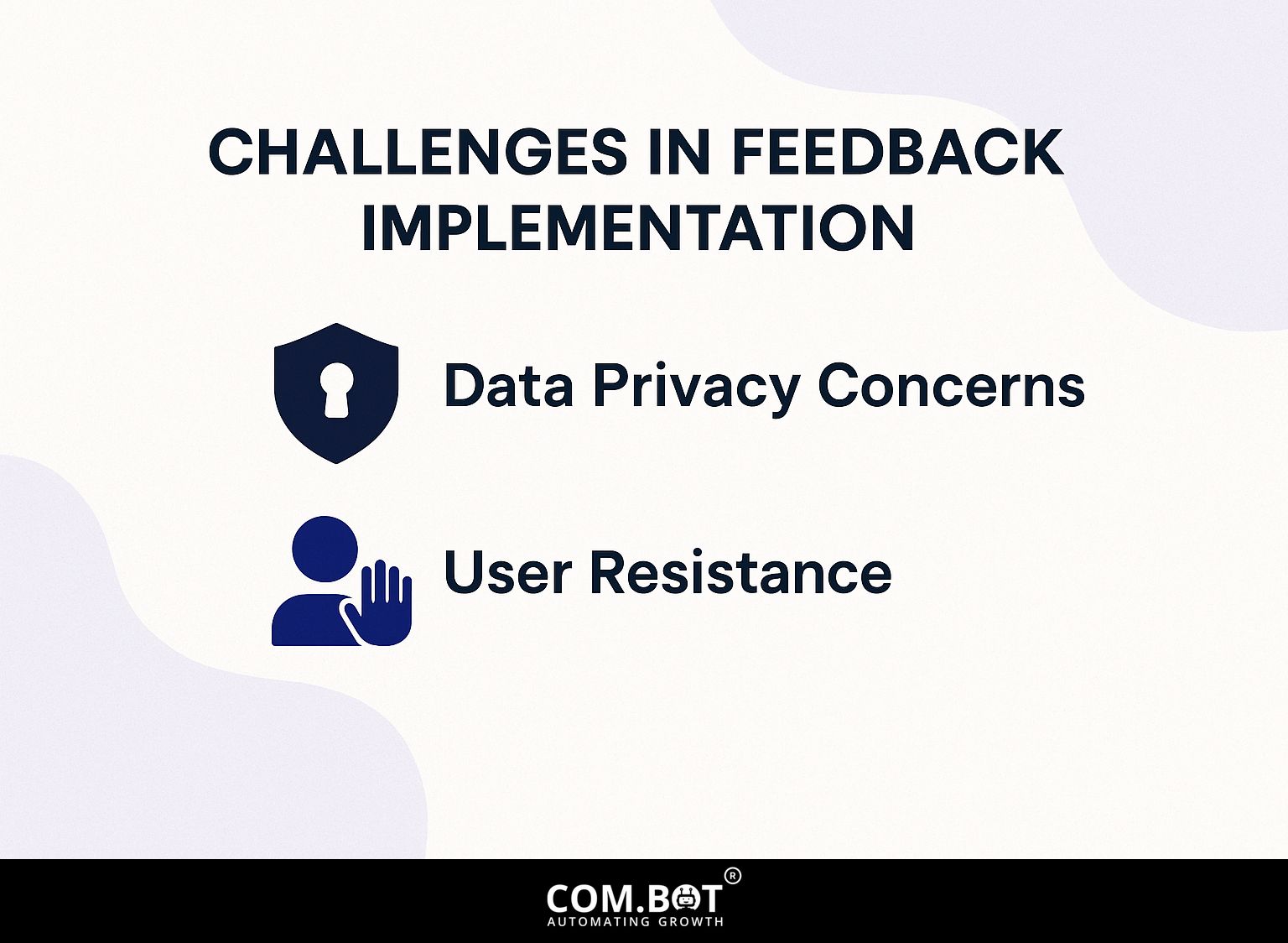
Feedback systems have clear benefits, but different obstacles can make putting them into practice and using them effectively difficult. To tackle these challenges, it’s essential to explore the improvement techniques for AI feedback systems, which offer valuable insights.
Data Privacy Concerns
Data privacy concerns pose significant challenges for AI feedback systems, often affecting user trust and system adoption rates.
To handle these difficulties, companies such as Microsoft and Apple have put in place strong privacy policies that focus on being open with users.
Microsoft, for example, enables users to control their data sharing through detailed privacy settings within its products. Similarly, Apple’s App Tracking Transparency feature informs users of data collection practices, allowing them to opt-out easily.
Utilizing consent management platforms (CMPs) can also help companies comply with regulations like GDPR and CCPA, ensuring that users are informed and their data is safeguarded.
Using these steps builds trust, which makes gathering feedback more effective.
User Resistance
Users often resist feedback systems because they do not see their advantages or do not grasp how they work.
To address this, start by educating users on the importance of feedback through workshops or informational sessions.
For example, using tools like SurveyMonkey can gather initial opinions about the feedback system, helping users feel heard.
Set up regular meetings where users can discuss their experiences and suggest changes, encouraging teamwork.
When they help improve the system, they will feel responsible, leading to less pushback and more involvement.
Regularly sharing success stories from people who used feedback can encourage those unsure about it.
Upcoming Developments in AI Feedback Systems
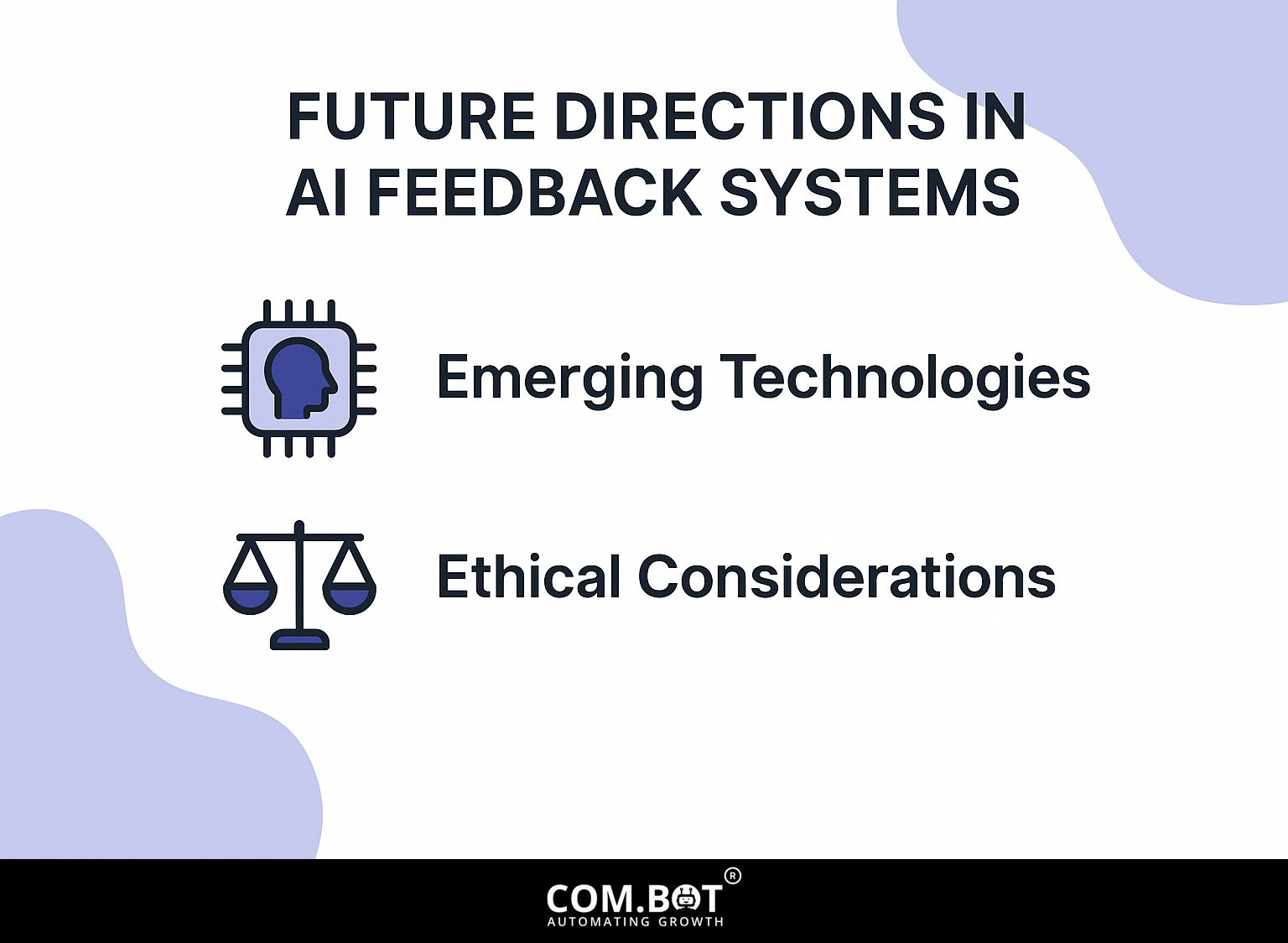
AI feedback systems are set to expand, fueled by new technologies and changing ethical issues.
Emerging Technologies
New technologies such as machine learning improvements and real-time feedback systems are changing how AI systems use user feedback.
For example, platforms like Google Analytics now use modern tools to forecast and study user actions more accurately. These tools allow brands to adjust their marketing strategies in real time, enhancing customer engagement.
Services like Qualtrics use AI to collect immediate feedback through surveys, allowing organizations to quickly change based on user needs. By using these technologies, businesses can predict trends and react faster, which leads to creating a unique user experience.
Ethical Considerations
Ethical considerations in AI feedback systems focus on data quality, bias correction, and ensuring transparent user interactions.
To handle these ethical challenges, organizations can use systems like the Transparency System and the Fairness Tools.
The Transparency Framework clearly shows users how their feedback will be used, which helps create trust and accountability.
Simultaneously, the Fairness Toolkit helps in identifying and mitigating cognitive biases in feedback processes, using techniques like diverse sample representation and blind review practices.
By combining these systems, companies can make a feedback process that improves AI function and makes users happier.
Frequently Asked Questions
What is the importance of feedback for AI systems?
Feedback for AI systems is important because it helps keep improving and adjusting how well the system works. It helps find and fix any biases or mistakes in how the system makes decisions.
How does feedback improve AI systems?
Feedback allows AI systems to learn from their mistakes and adjust their algorithms accordingly. It also helps to grow the system’s knowledge by adding new data and information.
What are some techniques for collecting feedback for AI systems?
Some techniques for collecting feedback for AI systems include user surveys, data analysis, user testing, and monitoring system performance in real-time.
How can feedback be used to address biases in AI systems?
Feedback from diverse sources can help identify and address biases in AI systems. It allows for the detection of patterns and trends that may indicate bias and helps in implementing corrective measures.
Is human feedback necessary for improving AI systems?
Yes, human feedback is important for making AI systems better. Although the system can solve some issues on its own, human involvement and knowledge are crucial for major improvements and changes.
What are some potential drawbacks of not incorporating feedback in AI systems?
Not including feedback in AI systems can cause wrong and biased choices, reduce learning abilities, and make it hard to adjust to changing situations. It can also result in a lack of trust and acceptance of the system by users.
